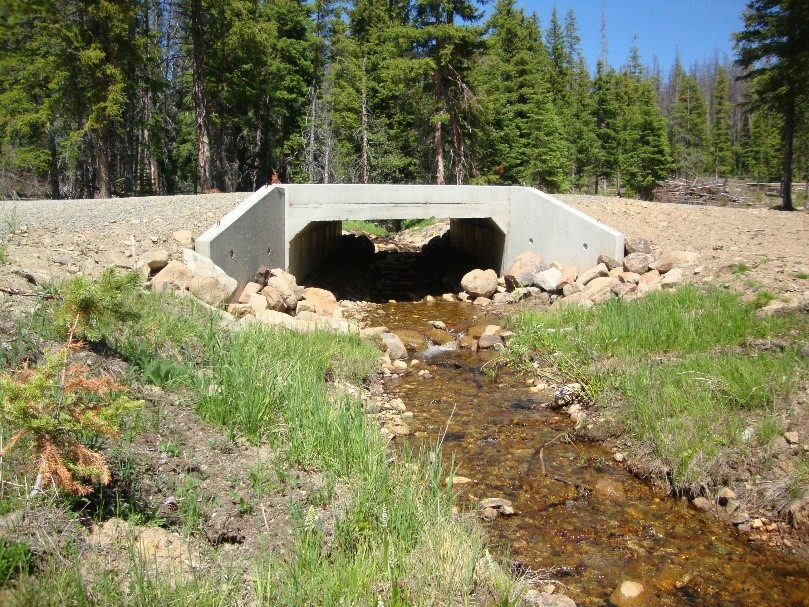In this article, you will explore the intricate connection between deforestation and climate change. By delving into the causes and effects of deforestation, you will gain a deeper understanding of how this destructive practice impacts our planet’s climate. Discover why preserving our forests is crucial for mitigating climate change and learn about the steps we can take to combat deforestation. Embark on this enlightening journey to uncover the link between deforestation and climate change and discover how we can work together to safeguard our environment.
The Causes of Deforestation
Deforestation, the permanent removal of trees from forests, is primarily caused by a combination of human activities and natural factors. The most significant drivers of deforestation include agriculture and land conversion, logging and timber industry, infrastructure development, mining and extraction, as well as urbanization and population growth.
Agriculture and Land Conversion
One of the main reasons behind deforestation is the expansion of agricultural practices. As the global demand for food, timber, and other agricultural commodities increases, more land is cleared to make way for crop cultivation, livestock rearing, and the establishment of plantations. This process often involves the use of slash-and-burn techniques, in which forests are burned to create fertile land for agriculture. Subsistence farming and large-scale commercial agriculture contribute to the conversion of forests into agricultural land, leading to extensive deforestation.
Logging and Timber Industry
The logging and timber industry is another major cause of deforestation worldwide. Forests are often targeted for their valuable timber, which is used in various industries, including construction, furniture manufacturing, and paper production. Unsustainable logging practices, such as clear-cutting and selective logging, can result in significant tree loss and habitat destruction. Illegal logging, driven by the demand for timber and weak law enforcement, further exacerbates deforestation rates and climate change.
Infrastructure Development
As societies develop and economies grow, the need for infrastructure increases. Road construction, mining projects, power plants, and other forms of infrastructural development often require the clearing of vast forest areas. The construction of roads, in particular, provides access to previously untouched or remote forest areas, making them vulnerable to deforestation due to increased human activities, such as agriculture, logging, and settlement.
Mining and Extraction
Mining activities, including coal, gold, oil, and gas extraction, contribute to deforestation and environmental degradation. Large-scale mining operations often entail the removal of vegetation and the excavation of land, causing irreversible damage to forests. Mining not only directly destroys forested areas but also leads to secondary deforestation through associated infrastructure development, such as roads and settlements.
Urbanization and Population Growth
The rapid growth of urban areas and population expansion puts immense pressure on forests. As cities expand, more land is needed for housing, industries, and infrastructure, leading to deforestation in urban and peri-urban areas. Additionally, population growth drives the demand for resources derived from forests, such as food, timber, and energy, further intensifying the rate of deforestation.
Impacts of Deforestation on Climate Change
Deforestation has far-reaching impacts on climate change, significantly contributing to greenhouse gas emissions, loss of carbon sink, increased global warming, changes in regional climate, and alterations of the water cycle. These effects have serious consequences for the environment, ecosystems, and human well-being.
Greenhouse Gas Emissions
Deforestation is a major source of greenhouse gas emissions, responsible for approximately 15% of global carbon dioxide (CO2) emissions annually. Trees absorb carbon dioxide during photosynthesis, acting as natural “carbon sinks.” However, when forests are cleared or burned, the stored carbon is released back into the atmosphere as CO2, contributing to the greenhouse effect and climate change. Additionally, deforestation leads to the release of other greenhouse gases, such as methane (CH4) and nitrous oxide (N2O), further amplifying the warming effect.
Loss of Carbon Sink
Forests play a crucial role as carbon sinks, absorbing and storing large amounts of carbon from the atmosphere. The removal of trees through deforestation reduces the capacity of forests to act as carbon sinks, leading to the loss of this crucial mechanism for mitigating climate change. Moreover, the degradation of remaining forests, due to selective logging or fragmentation can compromise their ability to sequester carbon effectively.
Increased Global Warming
The combination of greenhouse gas emissions from deforestation and the loss of carbon sinks contributes significantly to global warming. As more carbon dioxide and other greenhouse gases accumulate in the atmosphere, they trap heat, leading to a rise in global temperatures. Deforestation, therefore, exacerbates the warming trend, further destabilizing the Earth’s climate system and leading to numerous adverse effects on ecosystems and human societies.
Changes in Regional Climate
Deforestation also results in significant changes in regional climates. Forests play a crucial role in regulating temperature, humidity, and precipitation patterns at both local and regional scales. When forests are cleared, the land surface changes, leading to altered moisture availability and increased temperatures. These changes can disrupt normal weather patterns, causing shifts in rainfall distribution, droughts, and heatwaves in deforested areas.
Alteration of Water Cycle
The removal of trees through deforestation disrupts the water cycle, leading to numerous water-related impacts. Forests act as natural regulators of water flow, absorbing rainfall, reducing soil erosion, and maintaining stable water levels in rivers, lakes, and underground aquifers. Deforestation disrupts these processes, resulting in decreased rainfall, increased runoff, elevated erosion rates, reduced water availability, and changes in the quality of water resources. These alterations can have severe consequences for agriculture, freshwater ecosystems, and human communities that rely on water for various purposes.

Greenhouse Gas Emissions from Deforestation
Deforestation contributes to greenhouse gas emissions through the release of carbon dioxide (CO2), methane (CH4), and nitrous oxide (N2O). These emissions occur primarily as a result of land-use changes, biomass burning, and soil degradation associated with deforestation and forest degradation.
Carbon Dioxide (CO2) Emissions
The burning and decomposition of organic matter, such as trees, leaves, and soil, during deforestation and land-use changes, release significant amounts of carbon dioxide into the atmosphere. CO2 emissions from deforestation are estimated to account for approximately 15% of global emissions each year, making it a significant contributor to climate change.
Methane (CH4) Emissions
Deforestation contributes to methane emissions through various processes, including the decay of organic materials in wetland areas and the release of methane from termites and livestock. Methane is a potent greenhouse gas, with a much higher warming potential than carbon dioxide over shorter timeframes.
Nitrous Oxide (N2O) Emissions
Soil degradation and changes in land use associated with deforestation can lead to increased nitrous oxide emissions. Nitrous oxide is a potent greenhouse gas, primarily released from agricultural activities such as the use of nitrogen-based fertilizers and the conversion of forests to croplands or pastures.
Deforestation and the Loss of Carbon Sink
Forests function as critical carbon sinks, absorbing and storing atmospheric carbon dioxide through photosynthesis. However, deforestation leads to the loss of this carbon sink function, amplifying the effects of climate change and contributing to a positive feedback loop.
Role of Trees in Carbon Sequestration
Trees play a crucial role in carbon sequestration. Through photosynthesis, trees absorb carbon dioxide from the atmosphere, converting it into organic matter and releasing oxygen back into the air. In this process, trees act as natural carbon sinks, effectively removing carbon from the atmosphere and storing it in their trunks, branches, leaves, and roots.
Reduced Forest Cover Leads to Increased CO2 Levels
When forests are cleared or degraded through deforestation, the stored carbon is released back into the atmosphere as carbon dioxide. The loss of forest cover, particularly in tropical regions with dense forests, contributes significantly to increased CO2 levels, as the carbon stored in trees and vegetation is rapidly released into the atmosphere.
Positive Feedback Loop of Climate Change
The loss of carbon sinks due to deforestation exacerbates the effects of climate change through a positive feedback loop. As forests are cleared, the atmospheric concentration of CO2 increases, leading to global warming. Higher temperatures and changing climatic conditions, in turn, can further degrade forests, making them more vulnerable to pests, diseases, and wildfires. This degradation releases even more carbon into the atmosphere, amplifying the warming effect and further accelerating climate change.

The Feedback Loop Between Deforestation and Global Warming
Deforestation and global warming are intertwined processes that exacerbate each other, leading to a range of environmental, ecological, and socio-economic impacts.
Elevated Temperatures and Increased Droughts
The loss of forests through deforestation contributes to elevated temperatures due to reduced shade and the removal of a cooling effect provided by trees. As temperatures increase, the risk of droughts intensifies, affecting both forested and neighboring agricultural areas. Droughts can further exacerbate forest degradation, leading to increased wildfire risks and loss of biodiversity.
Altered Weather Patterns and Extreme Events
Deforestation can disrupt regional weather patterns, leading to changes in precipitation and the frequency and intensity of extreme weather events. Forests play a crucial role in regulating rainfall by releasing moisture into the atmosphere through transpiration. When forests are cleared, this moisture cycle is disrupted, leading to altered weather patterns, including reduced rainfall, prolonged droughts, and increased intensity of storms.
Melting of Permafrost and Release of Stored Carbon
In regions with permafrost, the continuous freezing of soil layers containing organic matter, deforestation can accelerate the process of permafrost thawing. As forests are removed, the insulating effect of vegetation is reduced, causing a rise in ground temperatures. Thawing permafrost releases significant amounts of stored carbon in the form of methane and carbon dioxide, amplifying greenhouse gas emissions and contributing to global warming.
Regional Climate Changes Due to Deforestation
Deforestation can cause significant changes in regional climate, leading to alterations in rainfall patterns, temperature regimes, and the creation of heat islands. These changes have broad-ranging impacts on ecosystems, biodiversity, and human well-being.
Rainfall Patterns and Microclimate Alterations
Forests play a vital role in regulating local and regional rainfall patterns through transpiration and the release of moisture into the atmosphere. When forests are cleared, the water cycle is disrupted, leading to reductions in rainfall amounts, changes in the seasonality of precipitation, and alterations in the distribution of rainfall across a region. These changes can have severe consequences for ecosystems, agriculture, and water availability.
Temperature Changes and Heat Island Effect
Deforestation can lead to increased temperatures, particularly in urban and peri-urban areas. Forests provide shade and evaporative cooling, reducing the urban heat island effect. When trees are cleared, surfaces become exposed to direct sunlight, leading to higher temperatures. This increase in temperature can create heat islands, where urban areas experience significantly higher temperatures than the surrounding natural landscapes. Heat islands can have adverse effects on human health, energy consumption, and the overall livability of cities.
Loss of Biodiversity and Ecological Balance
Deforestation threatens biodiversity by destroying habitats and disrupting ecological processes. Forests are home to countless plant and animal species, many of which are found nowhere else on Earth. When forests are cleared, the unique habitats they provide are lost, leading to the extinction of species and the disruption of ecological interactions. As biodiversity declines, ecosystems become less resilient to environmental changes and more susceptible to the impacts of climate change.

Alteration of Water Cycle by Deforestation
Deforestation has profound effects on the water cycle, leading to decreased rainfall, increased risk of flooding and erosion, and impacts on water quality and aquatic ecosystems.
Decreased Rainfall and Water Availability
Forests play a critical role in maintaining water balance by absorbing rainfall and releasing it gradually, ensuring a steady supply of water to downstream areas. When forests are cleared, the rainfall that was previously absorbed by trees is no longer effectively regulated, leading to decreased rainfall and water availability. This reduction in water availability can have significant consequences for agriculture, freshwater ecosystems, and human communities that rely on water resources.
Increased Risk of Flooding and Erosion
Deforestation increases the risk of flooding and erosion in affected areas. Forests act as natural buffers, absorbing rainfall and reducing the speed and volume of surface runoff. When forests are cleared, there are no longer trees and vegetation to mitigate the impact of heavy rainfall. As a result, rainwater runs off the land more quickly, causing increased river flow and the potential for flooding. Additionally, deforestation leads to soil erosion, as the removal of trees exposes the soil to wind and rain, carrying away the fertile topsoil and degrading the land.
Impact on Water Quality and Aquatic Ecosystems
Deforestation affects water quality by disrupting natural filtration processes and increasing sediment and nutrient runoff into water bodies. Forests act as natural filters, trapping sediments and absorbing excess nutrients, preventing them from reaching rivers, lakes, and aquifers. When forests are cleared, soil erosion increases, resulting in sedimentation of water bodies and the contamination of water resources. This can have detrimental effects on aquatic ecosystems, including the loss of biodiversity, reduced water quality, and the degradation of fish habitats.
Socioeconomic Factors Contributing to Deforestation
While natural factors play a role in deforestation, socioeconomic factors are significant drivers of this phenomenon. Poverty, agricultural expansion, illegal logging, weak law enforcement, corruption, and infrastructure development contribute to the continued destruction of forests worldwide.
Poverty and Lack of Alternatives
Poverty is closely linked to deforestation as individuals and communities may rely on the exploitation of forest resources for their livelihoods. In many developing countries, poverty forces people to engage in practices such as unsustainable logging, slash-and-burn agriculture, and fuelwood collection, which contribute to deforestation. Lack of alternative income-generating opportunities and inadequate access to education and healthcare can perpetuate this cycle of poverty and environmental degradation.
Agricultural Expansion and Demand for Cash Crops
The expansion of agriculture, driven by both subsistence and commercial motives, is a major cause of deforestation. The growing global demand for food, timber, and cash crops such as palm oil and soybeans drives the need for additional agricultural land. Small-scale farmers and large agribusinesses often clear forests to establish plantations, contributing to deforestation rates. The profit-driven approach to agriculture often prioritizes short-term gains over long-term environmental sustainability.
Illegal Logging and Weak Law Enforcement
Illegal logging poses a significant threat to forests and contributes to deforestation. Weak law enforcement, corruption, and inadequate governance systems allow illegal logging operations to thrive, often driven by high demand for timber products and limited control over logging activities. These activities not only cause direct tree loss but also facilitate the degradation of remaining forests through unsustainable practices such as selective logging and illegal conversion of protected areas.
Corruption and Land Grabbing
Corruption plays a significant role in deforestation, allowing illegal activities and land grabbing to occur. Forests are often subject to illegal exploitation and conversion for personal gain by individuals or corporations with connections to officials who enable such activities. Land grabbing, the illegal acquisition of land rights, can also lead to deforestation as forests are cleared to make way for commercial projects, including agriculture, mining, or infrastructure development.
Infrastructure Development and Road Construction
Infrastructure development and road construction play a dual role in deforestation. On one hand, they provide access to previously inaccessible forest areas, increasing the vulnerability of these ecosystems to deforestation. On the other hand, they fuel economic growth, providing opportunities for trade, transportation, and increased accessibility. The construction of roads, in particular, is often associated with deforestation as it paves the way for further land conversion, logging, and urbanization.
Efforts to Combat Deforestation and Climate Change
Recognizing the urgent need to address deforestation and its link to climate change, various efforts and strategies have been implemented to combat this global issue. International agreements, forest conservation programs, sustainable land use practices, alternatives to deforestation, community-based forest management, and corporate responsibility play crucial roles in mitigating deforestation.
International Agreements and Forest Conservation Programs
International agreements, such as the United Nations Framework Convention on Climate Change (UNFCCC) and the REDD+ (Reducing Emissions from Deforestation and Forest Degradation) initiative, aim to reduce deforestation and promote sustainable forest management. These agreements facilitate cooperation between countries and provide frameworks for financial and technical support to developing nations for sustainable land use practices and forest conservation. Forest conservation programs, such as national parks, protected areas, and reforestation initiatives, also contribute to mitigating deforestation and preserving ecosystems.
Forest Stewardship and Sustainable Land Use Practices
Forest stewardship and sustainable land use practices are essential for the long-term preservation and sustainable management of forests. Forest certification schemes, such as the Forest Stewardship Council (FSC), promote responsible forest management, ensuring that timber and other forest products are sourced from sustainably managed forests. Sustainable land use practices, including agroforestry, organic farming, and the restoration of degraded land, help minimize the need for further deforestation by promoting environmentally friendly and socially beneficial approaches.
Promotion of Alternatives to Deforestation
Promoting alternatives to deforestation is crucial in reducing the pressure on forests for land conversion and resource extraction. Agroforestry, which combines tree cultivation with agriculture, provides a sustainable land use option that can enhance food security, improve livelihoods, and conserve biodiversity. Additionally, sustainable practices such as reducing food waste, promoting renewable energy sources, and investing in eco-friendly technologies help reduce the demand for natural resources derived from forests.
Community-Based Forest Management
Involving local communities in forest management is key to achieving sustainable and equitable outcomes. Community-based forest management empowers local communities to actively participate in decision-making processes and share the benefits derived from forests. By recognizing and supporting indigenous peoples’ rights, traditional knowledge, and customary land tenure systems, community-based forest management can create incentives for responsible forest stewardship and reduce deforestation rates.
Corporate Responsibility and Certification Programs
Corporate responsibility plays a vital role in tackling deforestation and climate change. Many companies have committed to eliminating deforestation from their supply chains through implementing zero-deforestation policies and sourcing sustainably produced commodities. Certification programs, such as the Roundtable on Sustainable Palm Oil (RSPO) and the Forest Stewardship Council (FSC), provide a framework for companies to verify the sustainability of their products and ensure responsible sourcing practices.
Conclusion
Deforestation and climate change are closely intertwined issues that require urgent attention and global cooperation to address effectively. The causes of deforestation, including agriculture, logging, infrastructure development, mining, and population growth, have far-reaching impacts on climate change, regional climates, water cycles, and biodiversity. The release of greenhouse gases from deforestation contributes to global warming, while the loss of carbon sinks amplifies the effects of climate change. The feedback loop between deforestation and global warming leads to further environmental degradation, altered weather patterns, and increased extreme events. Socioeconomic factors, such as poverty, agricultural expansion, illegal logging, corruption, and weak law enforcement, drive deforestation rates. Efforts to combat deforestation and climate change involve international agreements, forest conservation programs, sustainable land use practices, alternatives to deforestation, community-based forest management, and corporate responsibility. By prioritizing responsible forest stewardship, inclusive governance, and sustainable economic practices, it is possible to mitigate deforestation and protect the invaluable ecosystems that sustain life on our planet.



